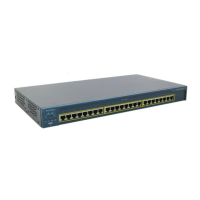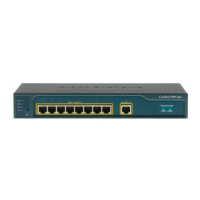CHAPTER
11-1
Catalyst 2950 and Catalyst 2955 Switch Software Configuration Guide
78-11380-12
11
Configuring Smartports Macros
This chapter describes how to configure and apply Smartports macros on the Catalyst 2950 switch.
Note For complete syntax and usage information for the commands used in this chapter, see the command
reference for this release.
This chapter consists of these sections:
• Understanding Smartports Macros, page 11-1
• Configuring Smartports Macros, page 11-2
• Displaying Smartports Macros, page 11-8
Understanding Smartports Macros
Smartports macros provide a convenient way to save and share common configurations. You can use
Smartports macros to enable features and settings based on the location of a switch in the network and
for mass configuration deployments across the network.
Each Smartports macro is a set of CLI commands that you define. Smartports macros do not contain new
CLI commands; they are simply a group of existing CLI commands.
When you apply a Smartports macro on an interface, the CLI commands within the macro are configured
on the interface. When the macro is applied to an interface, the existing interface configurations are not
lost. The new commands are added to the interface and are saved in the running configuration file.
There are Cisco-default Smartports macros embedded in the switch software (see Table 11-1). You can
display these macros and the commands they contain by using the show parser macro user EXEC
command.
Table 11-1 Cisco-Default Smartports Macros
Macro Name
1
Description
cisco-global Use this global configuration macro to enable load balancing across VLANs, provide
rapid convergence of spanning-tree instances and to enable port error recovery.
cisco-desktop Use this interface configuration macro for increased network security and reliability
when connecting a desktop device, such as a PC, to a switch port.

